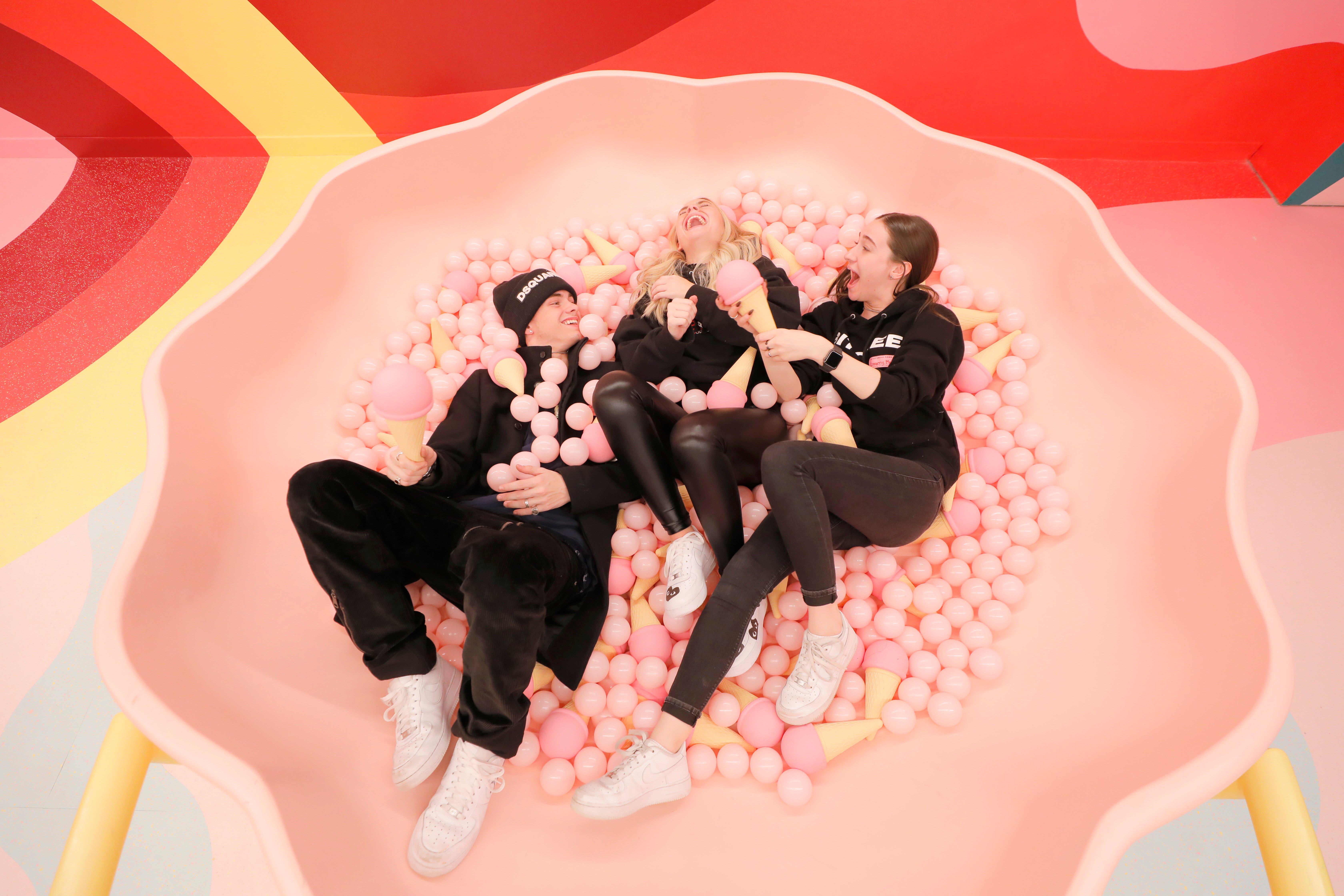
A smorgasbord of food-themed experiential exhibits has cropped up around the United States in recent years, with selfies as the binding ingredient. The Museum of Ice Cream pop-up that opened in New York’s Meatpacking District during the summer of 2016 paved the way for other short-term shows such as the Museum of Pizza, the avocado-themed CADO, Candytopia, and the Egg House.
There seems to be no expiration date in sight for this Instagram-fueled phenomenon, as the Museum of Ice Cream opened a permanent 25,000-square-foot flagship location in New York’s SoHo neighborhood this weekend. The company behind the millennial pink empire is valued at $200 million and slated to open additional locations over the next 18 months, in the US and internationally.
“We are not your ordinary museum!” reads the museum’s website. “Prepare for the extraordinary. Here, unicorns are real and every day starts with a swim in the sprinkle pool.”
The new outpost features 13 sensory installation spread over three floors, including a spiral slide, Banana Room, bouncy house, pink subway car, Milkshake Lounge, and a queen bee hive. The installation for which this roving museum is known best, the rainbow sprinkle pool, is one-upped by an adults-only sprinkle jacuzzi.
NEW YORK, NEW YORK – DECEMBER 12: Kim Kaputo attends Museum of Ice Cream SoHo Flagship Opening Party on December 12, 2019 in New York City. (Photo by Cindy Ord/Getty Images for Museum of Ice Cream)
Timed entry tickets to this experience cost $39—more than double the fee for the museum’s original pop-up, and well over the cost of admission to any major American art museum. Despite art world criticism that the company has unjustly hijacked the term “museum,” the Museum of Ice Cream is a sensation that has welcomed over 1.5 million visitors since its inaugural pop-up.
As Artnet News art business editor Tim Schneider has pointed out, the Museum of Ice Cream runs a lucrative business model (despite offering an arguably empty calorie experience). It charges high admission while avoiding almost all of the high operational costs of an art museum, such as insurance, conservation, and rotating exhibitions.
NEW YORK, NEW YORK – DECEMBER 12: Bethenny Frankel attends Museum of Ice Cream SoHo Flagship Opening Party on December 12, 2019 in New York City. (Photo by Cindy Ord/Getty Images for Museum of Ice Cream)
The worthwhile images at the Museum of Ice Cream are those produced on-site, by visitors. A disclaimer at the bottom of the ticket sale terms on the museum’s website notes that it reserves the right to photographs taken of its guests on the premises, as well as any photographs taken of the museum and posted publicly by its guests. Or in other words, once you visit their flagship location you are likely to unwittingly become a part of the institution’s permanent image collection. (Art museums, meanwhile, tend to be more concerned with the copyrights surrounding the artwork on the walls.)
As for whether the founders of this spectacle are concerned about the future of museums, it seems unlikely. “It’s not so damn serious,” Museum of Ice Cream co-founder Maryellis Bunn told the The Atlantic. “I like ice cream, so do you, that’s enough.”
NEW YORK, NEW YORK – DECEMBER 12: Luann Diez attends Museum of Ice Cream SoHo Flagship Opening Party on December 12, 2019 in New York City. (Photo by Cindy Ord/Getty Images for Museum of Ice Cream)
Museum of Ice Cream, New York. Image courtesy of MOIC
Museum of Ice Cream, New York. Image courtesy of MOIC
NEW YORK, NEW YORK – DECEMBER 12: Selena Norman and guests attend Museum of Ice Cream SoHo Flagship Opening Party on December 12, 2019 in New York City. (Photo by Cindy Ord/Getty Images for Museum of Ice Cream)